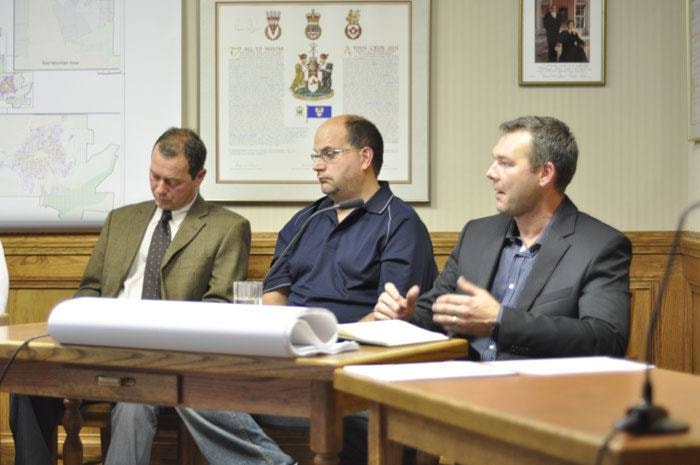The redeveloped Columbia Avenue will have three crosswalks, city council heard Monday.
Engineering firm ISL was at council Monday to present updated Columbia-Washington renewal plans.
Kevin Turness, project manager for ISL said the company has made a lot of progress since the last presentation in June.
Turness said the presentation was to answer questions that the public, funnelled through council, had and to provide an update on what’s changed on the project.
The presentation detailed the plans for the renewal. For Washington Street Turness said they would be looking at road safety improvements, utility upgrades and continuity with Columbia.
“On Washington, we were able to add pedestrian access on both sides of the road to Jubilee, then we switched to single sidewalks on the east side of the road all the way up to the top of Kirkup,” Turness said.
He detailed a plan that would see the sightline at the intersection of Washington and Second Street, as you descend the hill, be improved by grading down the slope.
“What we’re proposing to do is pull that existing road profile down so that instead of seeing out you see down on that sightline.”
He also said they are looking into treating areas between the sidewalks with landscaping, but safety comes first, so if any landscaping happens it would have to be low growth to not impede sightlines of drivers.
“Ultimately, road safety first and aesthetics second. We want to ensure that we achieve that.”
He also said the plan would close off Sixth Avenue, as it’s impassable and dangerous in the winter. ISL plans to put a “hammer-head” turnaround at the top.
This will allow them to get the proper slope on Washington in that area to help guide cars by grading the road surface into the curve. The road is currently graded away from the curve, causing vehicles to want to slide off the road.
They will also reduce the asphalt footprint and make the road safer around the Plewman-Washington intersection.
On Columbia, Turness said ISL has negotiated the bulb-outs, the intersection crossings that extend out onto the road, with Ministry of Transportation.
“We’ve formalized crosswalks on Columbia: there’s going to be three dedicated crossings,” he said.
The crossings will be on the west side of Spokane, the east side of Washington and the east side of Queens.
“It was felt this was a number that provided safe crossings as well as didn’t over-complicate travelling down that corridor,” he said.
A new item is that the drains will now drain away from the curbs instead of into the curbs. All the drainage will be behind the cars into swales, which will line up with the bulb-outs. This, said Turness, will define the actual driving surface much better than the current configuration.
ISL split the project into three phases. The first covers the work on Columbia and they estimate it coming in at just over $5 million.
Turness said there is good news, since the Ministry of Highways will pay $1.5 million of that.
Phase 2 spans the area from Columbia to Kirkup and including contingency is estimated at $3.8 million.
Phase 3 would be less critical work and come in at $326,000 and includes work on Hope Spring Park, a boardwalk and pedestrian access.
So the whole renewal project would cost $7.7 million with the MOT contribution.
ISL and the city are currently awaiting news from the federal government on grant applications totalling $8.5 million.
Much infrastructure needs to be addressed, like 80-year-old piping that could blow and cause more damage. The new pipes will likely have advanced shutoff and valve systems that can be controlled remotely.
Turness said the grants are expected to be announced before Christmas.
He also addressed businesses’ worries by saying they would do their best to work with businesses and contractors to make the smoothest work possible and advised council to try to get through all three phases next year if possible.
The construction, in the best case scenario, would begin as soon as the snow melts, around March and be complete by the time the snow flies again in the fall.
“A one year disruption that is horrible is forgotten a lot quicker than three years,” Turness said.
